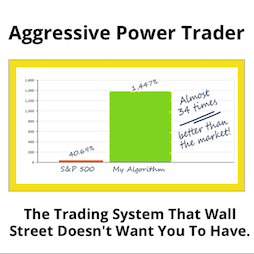The use of High-Frequency and Algorithmic trading in finance, also known as algo-trading, is the application of automated electronic systems for trading strategy execution. They are slightly different terms but have similarities and tend to go together.
The core difference between them is that algorithmic trading is designed for the long-term, while high-frequency trading (HFT) allows one to buy and sell at a very fast rate. The use of these methods became very common since they beat the human capacity making it a far superior option.
The electronic style of trading first surfaced in the seventies with the creation of Nasdaq. It was a system that used an electronic bulletin board without computer commands.
Later in 1987, the Chicago Mercantile Exchange implemented a more widespread platform, Globex, that became fully established in 1992. This system traded several assets such as treasuries, foreign exchange, and commodities.
Lower prices and faster execution time drove other exchanges to become electronic.
Humans can’t compute giant volumes of data like a computer can. This served as an inspiration for automated trading hardware and software tools development.
The innovative technology made the whole trading process cheaper and less cumbersome. Today, even people who are not trained professionals can be traders.
In this blog post, you’ll find out:
- What is algorithmic trading and its strategies
- Nuances of high-frequency trading
- Potentials of both kinds of trading
- Key features of algorithmic trading systems
- Essential steps to follow when building trading software
- Cost of custom algo-trading solutions
- The state of today’s trading markets
The Difference between HFT and Algorithmic Trading
Algorithmic, high-frequency, algo-, or automated trading are terms that often show up in trading-related articles. It’s easy to get confused and find yourself lost in all the definitions. This happens because both — the technological and financial landscapes have many nuances, and slight differences in operations create new terms.
Moreover, in some cases, certain phrases end up being used interchangeably and adding to the disorientation. So what is algorithmic trading and does it differ from HFT? To help you better understand this area of finance, we’re going to discuss each trading method in more detail.
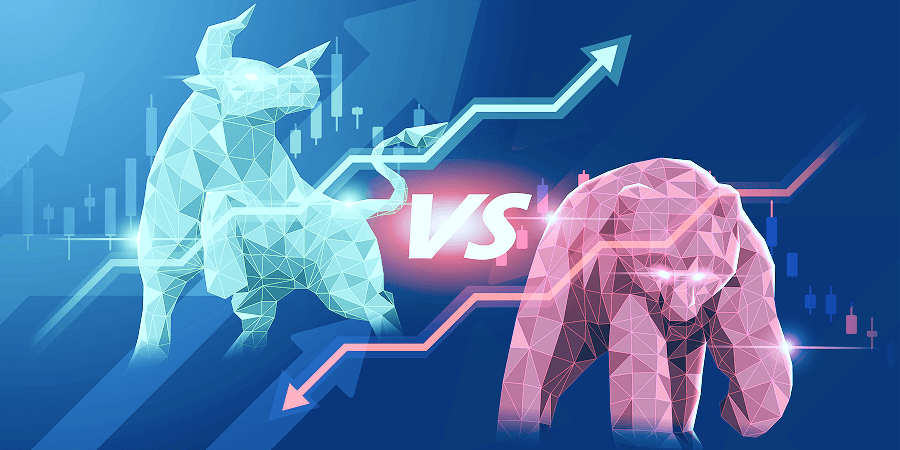
Algorithmic Trading
Algorithm trading is also known as algo-trading or black-box trading. It’s a trading solution that uses coded sets of algorithms and execution strategies to submit orders to a market or exchange automatically after a technical analysis. So how do trading algorithms work?
Algorithm trading involves the use of predefined sets of variables such as price, time, and volume by pre-programmed trading instructions. These instructions, known as an execution algorithm, send child orders (small slices) to make up for larger orders that are too big to send at once.
Slicing into small orders helps attain good pricing within a specified time. Reduction in the size of orders is good for an aggressive market. Thus, making algorithmic trading widely applicable to trading with high market volumes such as mutual funds, investment banks, hedge funds, etc.
The main objective of algo-trading is not just to profit by trading but to save costs, minimize market impact, and the execution risk of a trading order. With algorithmic trading software, traders don’t need to watch stocks or send slices manually.
Benefits of Algorithmic Trading
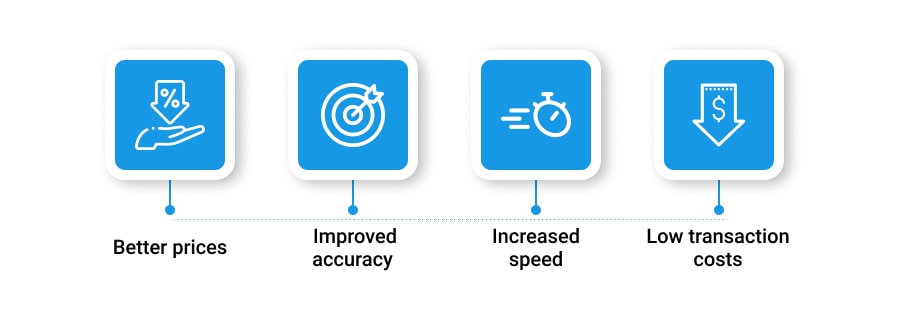
Now that you know what algorithmic stock trading entails, you’re likely already guessing the advantages it can bring. Just to be sure, let’s go over some of the main ones.
Better prices. With algo-trading, trades are executed at the best possible price thanks to being instantly timed to avoid large price fluctuations.
Improved accuracy. If a computer executes a trade instead of a person, there’s a lower likelihood of a mistake being made. The human factor often affects the levels of accuracy. Hence, when software that uses trading algorithms is involved, precision is increased.
Increased speed. Since algorithms are pre-written and executed automatically, the speed at which trades are carried out is significantly boosted.
Lower transaction costs. Thanks to traders not needing to monitor the markets as closely and execution being carried out without their involvement, their time is freed up. Thus, transaction costs are reduced and traders can engage in other activities.
Algorithmic Trading Strategies
Algorithmic trading can be approached in a few ways. Everything depends on the end goal and preferences. These are the nine most common types of algorithmic trading strategies:
Trend-following. It capitalizes on persistent price trends in financial markets. With it, traders analyze historical data and technical indicators to identify trends and generate buy or sell signals. The trend-following strategy helps capture profits by riding trends until signs of reversal. It has a potential to boost consistent returns in markets with strong and prolonged trends.
Arbitrage leveraging. This approach exploits price discrepancies across platforms or exchanges. It helps traders monitor multiple markets for differences in asset prices and swiftly execute trades to capture the price differential. With its precise and rapid execution, it minimizes market exposure and risk.
Index fund rebalancing. It adjusts a portfolio’s holdings periodically to maintain a target allocation. This strategy is based on the principle of maintaining a consistent exposure to different asset classes or sectors represented by the underlying index. It ensures diversification, mitigates risk, and aligns with the index’s objectives.
Mathematical model-based. It uses quantitative models and algorithms to make trading decisions. Traders develop mathematical models that incorporate various market data, indicators, and statistical techniques to generate signals for buying or selling assets. This kind of strategies offer systematic approach, potential for automation, and ability to exploit patterns and signals in the market for consistent profitability.
Volume-weighted average pricing. This is a method used to calculate the average price of an asset based on its trading volume throughout a given period. This strategy assigns greater weight to trades executed with higher volumes, reflecting the market’s actual buying and selling pressure. Traders utilize VWAP to assess whether their trades were executed at prices favorable to the average price. It is particularly helpful for large institutional investors who aim to minimize market impact and achieve cost-efficient executions.
Time-weighted average pricing. TWAP focuses on time-based execution, aiming to minimize market impact by spreading trades evenly throughout the chosen timeframe, regardless of volume fluctuations. This strategy provides traders with an average price that closely aligns with the market’s average price during the chosen timeframe.
Mean reversion. This strategy is a trading approach that comes in handy when asset prices tend to revert to their mean or average levels over time. It’s based on the belief that when an asset’s price deviates significantly from its historical average, it is likely to eventually return to that average. With it, traders identify these price divergences using statistical techniques and technical indicators and they take positions opposite to the recent price movement.
Percentage of volume. It executes trades based on a specified percentage of the total trading volume for a given asset. Traders utilizing this strategy determine a desired percentage of the overall trading volume they wish to trade and then execute orders accordingly. By implementing the POV strategy, traders can strike a balance between market participation and minimizing their influence on price movements.
Implementation shortfall. It seeks to balance the urgency of executing a trade with the desire to minimize transaction costs. It helps achieve the best possible execution price by considering factors such as market liquidity, price volatility, and order size. The strategy involves a series of decisions, including determining the optimal timing for trade execution and carefully managing trade-offs between price impact and the risk of not completing the trade.
Difference Between Algorithmic Trading and Automated Trading
Before we move on to high-frequency trading, we have to talk about one more term that you’ll likely see come up.
At the beginning of today’s piece, we mentioned that some trading-related terms are used interchangeably. In the case of algorithmic and automated trading this is also true. Some traders consider the two as the same, but we believe there is one key difference.
As discussed, algorithmic trading is used to buy and sell large amounts of assets while minimizing transaction costs and increasing speed. These systems only execute the provided orders. Conversely, automated trading software involves the complete automation of the trading process. This means that even the buying and selling decisions are automatic.
So, make sure you remember this detail when diving deeper into the subject of financial trading.
High-Frequency Trading
High-Frequency Trading is a subset of algo-trading. Its major characteristics are high speed, a huge turnover rate, co-location, and high order-to-order ratios. It operates by using complex algorithms and sophisticated technological tools to trade securities.
Software used for high-frequency trading manages small scale trade orders sending them to a market or exchange at great speed. It benefits from bid-ask spreads. The height of the speed involved in the transaction process makes this trading approach a market maker.
Learn more: In Pursuit of Ultra-Low Latency: FPGA in High-Frequency Trading
Real-time data feeds are needed to reduce microseconds delay and avoid profit loss. Usually, the latency should be between 300 – 800 nanoseconds. This is achieved with a high-performance software, low-latency networks, and FPGA-based hardware acceleration.
Opportunities are noted through sensing large size orders that are pending by placing small-sized multiple orders and analyzing the pending and execution time. The successfully noted opportunities in the form of pending orders are then capitalized by adjusting prices to cover them and make profits.
Benefits of High-Frequency Trading
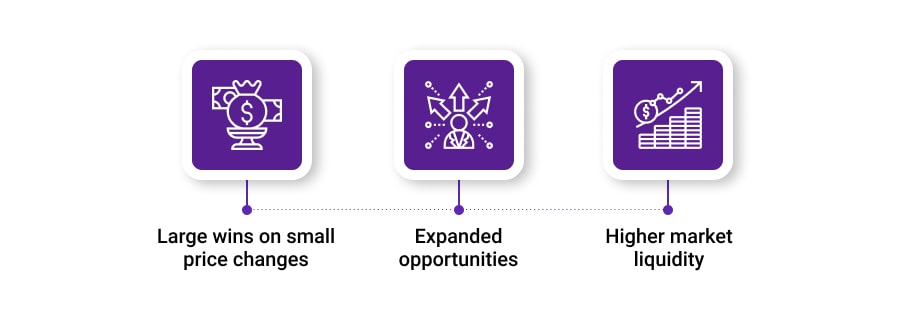
HFT solutions use complex algorithms to spot emerging trends in milliseconds. As you can imagine, this has some specific benefits.
Large wins on small price changes. High-frequency trading systems help traders earn significant profits even from minor price fluctuations. With these tools, financial institutions can attain significant bid-ask spread returns.
Expanded opportunities. Since algorithms are able to scan multiple markets and stock exchanges, traders are able to discover more opportunities. For example, arbitraging the same asset with minor price differences on two separate exchanges.
Higher market liquidity. By increasing competition on the market due to larger volumes and speed of execution, high-frequency trading makes markets more price-efficient. Consequently, market risk declines since there’s always someone to buy what you’re selling and vice versa.
High-Frequency Trading Strategies
High-frequency trading is a very complex process which is why it’s usually only leveraged by large institutions like proprietary firms, investment banks, and hedge funds. These organizations rely on various money-earning strategies, some more controversial than others.
Read about the Development of a High-Frequency Trading System
Either way, it’s worth quickly mentioning the most popular ones:
Market-making. It is a type of HFT strategy where traders continuously provide liquidity to the market by simultaneously placing buy and sell orders for a particular asset. By actively quoting both buy and sell prices and quickly adjusting them based on market conditions, it’s possible to facilitate trading and contribute to market liquidity while generating profits from the spread.
Liquidity provision. It involves continuously monitoring the market and adjusting orders to accommodate changes in supply and demand. By providing liquidity, traders can facilitate trading activity, reduce bid-ask spreads, and enhance efficiency while seeking to capture profits from the spread and transaction fees.
Statistical arbitrage. This approach seeks to profit from pricing inefficiencies identified through statistical analysis. Traders identify relationships between multiple assets based on historical data and statistical models. They then take advantage of temporary deviations from the expected relationship by simultaneously buying and selling assets to capitalize on the expected reversion to the mean.
Price movement ignition. Helps profit from the acceleration of price movements triggered by specific events or conditions. With it, traders closely monitor market news, announcements, or technical indicators to identify potential catalysts that can trigger significant price movements. This strategy requires a proactive and agile approach, as traders aim to capture profits from the rapid price acceleration that follows the ignition event.
Potentials of High-Frequency and Algorithmic Trading
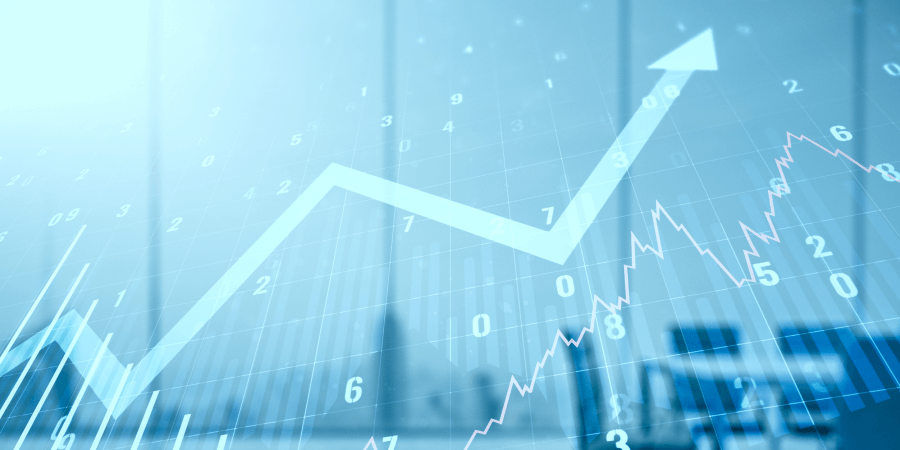
To be able to transact assets with the time of possession narrowed to one microsecond is a great task for a human, even via the command of a button. The human neurons are not designed to navigate signals at such speed and quickly process the information, make a decision, and take action. The need for such a speedy process of a transaction is the hand-in-glove relationship between these approaches.
The projection of algo-trading was by sequential processing, but the application of parallel computing and neural networking is a promising step. Processing via several nodes, as is in machine learning, with several inputs and outputs perfectly aligns with parallel computing. Thus, it is more likely to be parallel instead of sequential.
Another factor of importance is using Big Data and data science solutions. With the volume of transactions there is tons of information for analysis to decide a good or bad deal.
The efficiency of the trading solutions will naturally increase with more data and, as a result, create a more efficient market. The data harvested will also be an advantage for machine learning solutions.
Both trading approaches are fit for automation by AI. Most trading platforms are autonomous already, but there is always room for improvement. For instance, systems that analyze business information in the form of news will be a great trading tool.
AI will consolidate trading by harnessing and analyzing patterns and behavior from the past. It will also be able to learn and adapt itself as the market conditions change, thereby creating a perfect tool for trading.
Case study: Intelligent Trading Platform
Software for Algorithmic Trading
You now know the basics of algorithmic trading and might be getting curious about leveraging it for your business. You can do that with the help of algorithmic trading software. It is a tool that will automatically execute your trades once you’ve programmed it in a way that suits your goals.
Overall, there are two ways to get your hands on these types of investment management solutions. Either buy a ready-made product or build your own algorithmic trading system.
Currently, various trading solutions exist. All of them automate your trades through the use of a computer program that identifies a profitable opportunity and places an order in a much faster way than any human could.
The good thing about pre-built trading products and software tools is that you get quick access and can begin using them almost immediately. Before starting your hunt for the most fitting out-of-the-box system, remember that such solutions can be hard to customize.
Key Features of Algorithmic Trading Software
Now let’s briefly go over the key features and functionality that your algorithmic trading software should have in order to drive positive outcomes. Of course, depending on the strategies you’re going to rely on and goals you pursue, the capabilities of your platform may differ. Below, we provide a general set of features that most solutions have.
- Automated Trading
- Strategy Development and Backtesting
- Market Data Analysis
- Order Routing and Execution
- Risk Management
- Customization and Flexibility
- Performance Monitoring and Reporting
- Connectivity and Integration
- Scalability and High-Frequency Trading
- Regulatory Compliance
Basic Steps to Start Algorithmic Trading Software Development
The development of algorithmic trading software requires expertise in a range of fields that include programming, finance, and trading concepts. It is crucial to have a solid understanding of the underlying market dynamics and risk management principles to develop an effective and robust algorithmic trading solution.
The process we outline further can be adjusted according to your needs. However, these are the common steps for building software that serves general trading goals.
1. Define the Trading Strategy
That’s no surprise but you have start by clearly defining the trading strategy you want to automate. Specify the entry and exit conditions, risk management rules, and any other parameters that will guide the algorithmic trading software.
2. Select a Programming Language and Platform
With the help of your development team, choose a programming language that is suitable for algorithmic trading. For example, it can be Python, C++, or Java. Then you’ll need to select a trading platform or framework that supports algorithmic trading development, such as MetaTrader, NinjaTrader, or custom-built solutions.
3. Gather Market Data
Identify the market data required for your trading strategy. That can include prices, order book, or economic indicators. At this step, it’s also important to determine the sources and methods that will be used to collect and process data.
4. Implement Trading Algorithms
Here the team will work on the development of the algorithms that will execute trades based on your trading strategy. For that, they will write the code that will generate buy and sell signals, manage positions, handle risk management, and interact with the trading platform.
5. Backtest and Optimize
This step is about using historical market data to backtest your trading strategy. You need to validate its performance by simulating trades and analyzing the results. Then you might want to optimize the strategy parameters to improve its profitability and risk-adjusted returns.
6. Build Execution and Order Management
Next, implement the functionality to execute trades and manage orders. It’s crucial to ensure proper connectivity with trading platforms, exchanges, and data providers to enable real-time access and order routing.
7. Incorporate Risk Management and Compliance
Include risk management features to control position sizing, set stop-loss orders, and manage overall risk exposure. Another essential moment to keep in mind is adhering to regulatory requirements and best practices.
8. Test and Debug
This step is common for the implementation of any software solution, and trading one is no exception. Conduct rigorous testing of your trading platform to identify and fix any bugs or issues. You can try various market conditions to verify its performance and stress-test it to ensure stability and reliability.
9. Define the Trading Strategy
Finally, deploy the algorithmic trading software in a production environment and start executing trades. Keep monitoring its performance, continuously analyzing trading results, and making necessary adjustments to improve profitability and mitigate risks.
10. Maintain and Update
This step is important if you want to stay up-to-date with the market trends and current technologies. Or, if you need to incorporate new features or improvements and adapt to changing market conditions and regulations. For that, regularly maintain and update your trading software as needed.
Cost of Custom Algorithmic Trading System Development
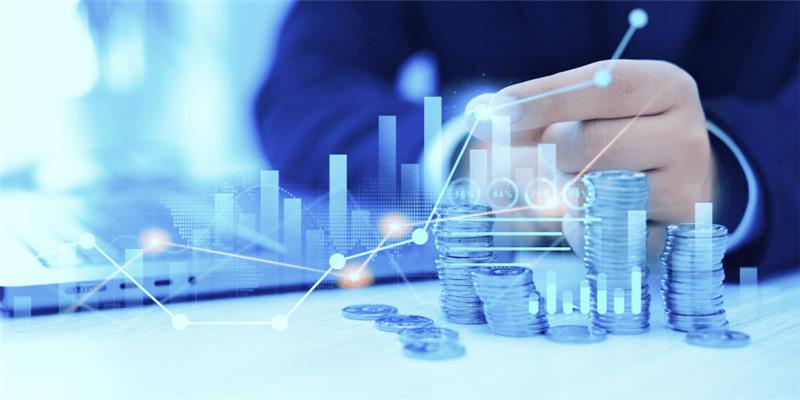
Should you choose to go the custom software development route, you’ll naturally wonder about its associated costs. However, first, you have to understand that bespoke solutions expand your capabilities and can be built to cater to your unique business goals. Sure, they take time, effort, and deep technical expertise to be created. It doesn’t mean you shouldn’t look into them.
If your company doesn’t have enough in-house expertise to develop the algorithmic software that you need — consider looking for experienced partners. We’ll be honest. Custom development can seem costly at first. Especially, when you see the price ranging between $5,000 to $1,000,000. However, when you begin calculating all the future benefits it can bring down the line, you might be less skeptical.
Bespoke trading tools do have a wide budget range, but only because there are a lot of factors affecting custom software development costs. All of them should be considered when estimating how much you might have to invest.
If you want to get more accurate approximations — reach out to the vendors you’re considering and ask them for a quote. That way, you’ll be able to plan your spending better.
The Reality of Today’s Trading Markets
Estimated US stock trade placed by computers is at about 75% and on the increase constantly. The use of trading solutions is making the market more liquid. This is helping investors make quick investments and earn enough to execute their trades fully.
Despite the type of trading you choose you cannot take away the use of algorithms. It’s an established factor in today’s market. The application of trading solutions has replaced the stress of noisy trading, the use of paper documents, and the old trading pits at stock exchanges.
Humans are the creators of algorithms and since these instructions have a defined purpose they have to be constantly perfected. Therefore, there is an increased urge to use compliance solutions to monitor trading algorithms.
High-frequency and algorithmic trading has also given birth to Robo-Advisors. Robo-advisory solutions are substituting for the human-curated data. They autonomously generate different investment strategies and send them as a data feed to investors.
In the Robo-Advisors market, the number of users is expected to amount to 234.30m users by 2027.
Source: Statista.com
High-frequency and algorithmic trading have unlimited possibilities and rapid progress for the success of any trading firm, hence full automation should be a special consideration.
As Chicago’s top development firm specializing in capital markets and financial services sectors, Velvetech has strong expertise in trading algorithms, financial models, trading platforms, FPGA-based solutions for HFT, and more.
If you want to develop the next Forex-like software or any other custom high-frequency trading solution for your specific goals, don’t hesitate to reach out to us. Our experts will be happy to provide their professional opinions and build a robust trading platform to ensure significant profits.
